40 Fun Facts About Valencia, Spain (That Will Shock You!)
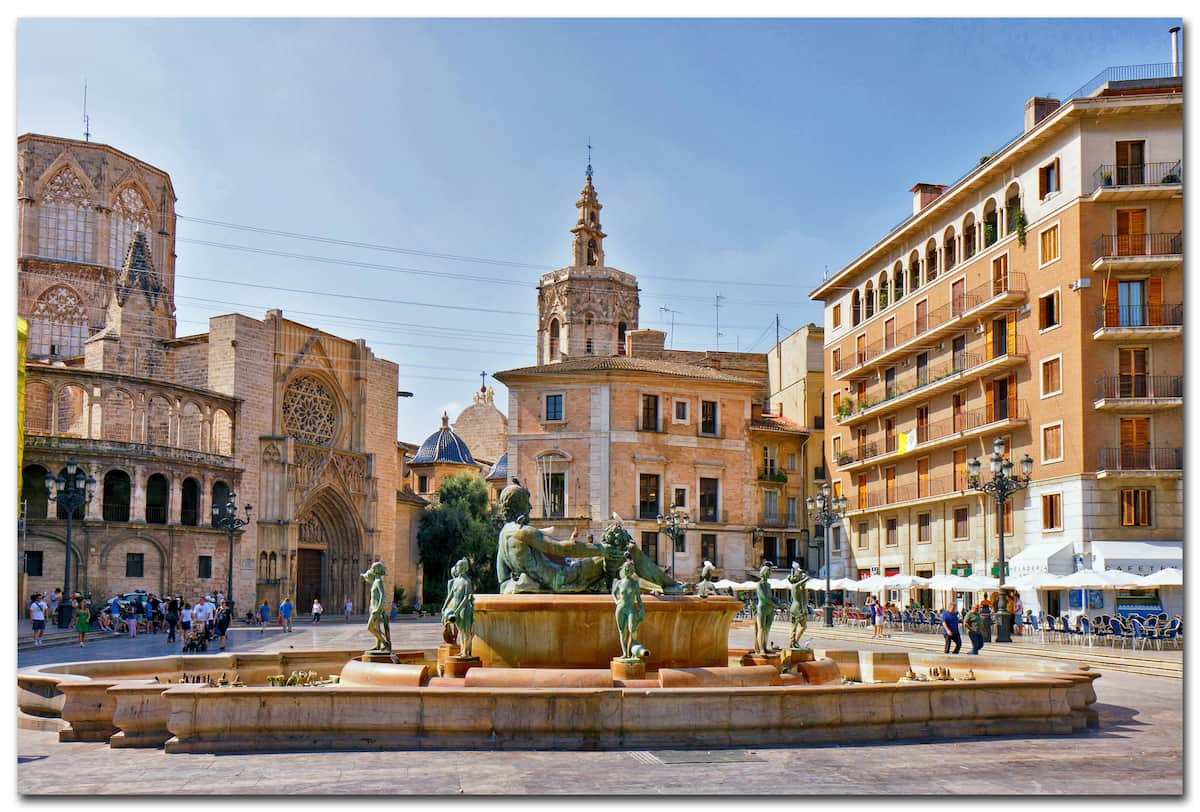
Valencia, Spain, is a city brimming with surprises and lesser-known facts that even some locals might not be aware of.
It’s not just the city’s famous paella and sunny beaches that make it stand out on the map of Spain. Imagine discovering that the seemingly familiar streets and landmarks around you hold stories and secrets waiting to be uncovered.
As someone who lives in Valencia, I’ve come to realize that this city is like a treasure chest, full of historical gems and quirky anecdotes that defy expectations. So, are you ready to explore some fun facts about Valencia that might just have you looking at this vibrant city in a whole new light?
Planning a trip to Valencia last minute?
If you’re booking your trip to Valencia last minute, I’ve got you covered. Below are some of the top tours, hotels, and more!
⭐ Top tours in Valencia
- City Highlights Guided Bike Tour (great way to see the city)
- Palosanto Flamenco Show (incredible night out)
- Old Town Tour, Wine and Tapas in an 11th Century Monument (all the highlights at once)
- Catamaran Cruise at Sunset (experience the Mediterranean – with cava)
- Oceanogràfic – Valencia Aquarium (biggest one in Europe!)
🛏️ Top hotels in Valencia
- Only YOU Hotel Valencia (5-star luxury)
- Vincci Palace (boutique hotel with beautiful décor)
- Hostal Antigua Morellana (great budget option in a superb location)
🚌 Want to see everything with minimal effort while you’re in Valencia? Check out the 24- or 48-Hour Hop-On Hop-Off Bus Ticket!
1. Valencia is the birthplace of paella
If you’re anything like me, you know that food isn’t just about eating – it’s about experiencing the culture and history of a place. And when it comes to Valencia, paella isn’t just a dish, it’s a piece of our soul.
Yep, that’s right – this iconic dish that’s become almost synonymous with Spanish cuisine started right here. But here’s the kicker: while you might be more familiar with the seafood paella that’s popular worldwide, the original paella Valenciana is a bit different.
In fact, it’s traditionally made with rabbit, chicken, snails, green beans, and butter beans.
So, when you’re in Valencia, you’ve got to try the real deal. It’s a taste of the local tradition that you won’t find anywhere else in the world.

2. The City of Arts and Sciences was designed by one of the world’s most famous architects
Walking through the City of Arts and Sciences feels like you’ve stepped onto another planet. This futuristic complex looks something straight out of a sci-fi movie, and it’s all thanks to Santiago Calatrava, a name you might’ve heard before.
He’s a Valencia-born architect who’s pretty big on the world stage. The place isn’t just about good looks; it’s packed with stuff to do, from an opera house to a science museum that doesn’t believe in boring exhibits.
My favorite part? The Oceanogràfic – but more on that later. Just make sure you charge your phone. You won’t be able to stop taking pictures, trust me.
3. The biggest aquarium in Europe is in Valencia
Did you know that Valencia is home to the biggest aquarium in Europe? It’s called the Oceanogràfic, and it’s part of the City of Arts and Sciences complex.
This place is huge and houses more than 500 different species, including dolphins, sharks, jellyfish, and more. Walking through the underwater tunnels feels like you’re on the ocean floor. It’s an amazing way to get up close with marine life without getting wet.
Whether you’re traveling with family or flying solo, the Oceanogràfic is a must-see. It’s not just about looking at fish – it’s an experience that really makes you appreciate the beauty and diversity of our oceans.
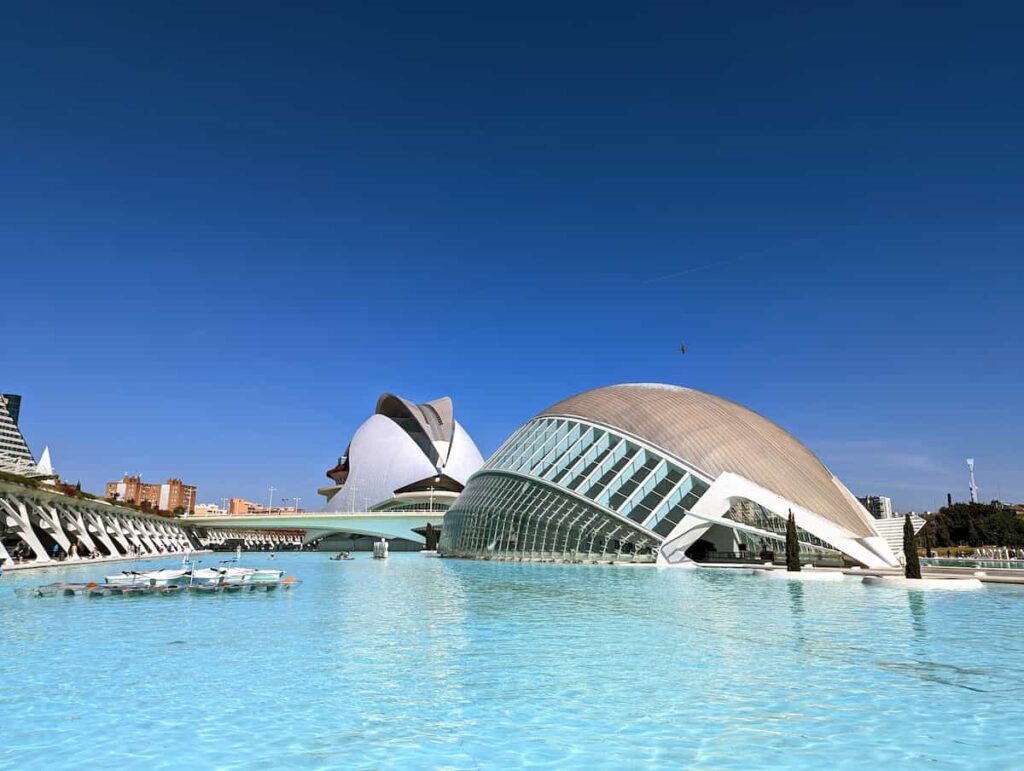
4. Europe’s largest market is in Valencia
Alright, let’s head into something that’s a big deal – literally. Valencia is home to the Central Market, which is the largest in Europe.
Imagine a place bustling with energy, where locals and tourists alike come to shop for fresh produce, seafood, meat, and pretty much anything else you can think of that’s edible. The building itself is a sight to see, with its beautiful modernist architecture.
But the real experience is inside – the colors, the smells, and the sounds. It’s like a festival for your senses.
You can grab a bite, pick up some local spices, or just wander around soaking in the atmosphere. It’s the perfect spot to get a feel for the local lifestyle.
5. The world’s oldest court was founded in Valencia (and still meets today)
Here’s a piece of history that’s still alive and kicking – the Water Tribunal. Founded way back in the time of the Moors, this is the oldest legal institution in the world that’s still functioning.
They meet every Thursday at noon outside the Cathedral to settle farmers’ disputes over water (although these days the meetings tend to be more symbolic than actually making rulings). It’s all done in Valencian, and it’s a fascinating mix of tradition and practicality.
For history buffs or anyone curious about unique cultural practices, it’s a must-see. It’s not every day you get to witness a living piece of history in action.

6. Valencia is the home of the Holy Grail
Now, for something that sounds straight out of a movie – Valencia claims to be the home of the Holy Grail. Yep, the cup that’s been the subject of legends, movies, and books for centuries.
It’s housed in the Valencia Cathedral, and the Vatican has even gone on record saying it’s the most likely candidate for the real deal. Whether you’re a history enthusiast, a religious pilgrim, or just someone who loves a good mystery, seeing the Holy Grail is an experience that’s hard to beat.
It’s not just about the artifact itself, but the stories and history that surround it. It adds a whole new layer of intrigue to this already fascinating city.
7. Valencia is home to three UNESCO sites
Did you know Valencia is packed with not one, not two, but three UNESCO World Heritage Sites?
First up, we have the Silk Exchange (La Lonja de la Seda), which is a stunning example of Gothic architecture and tells the tale of the city’s bustling trade history.
Then there’s the Water Tribunal I talked about earlier – it’s not just old and fascinating, but it’s also recognized by UNESCO for its cultural significance.
And lastly, there’s Las Fallas – a spectacle of creativity, art, and community spirit that transforms the city for several weeks every March.
Each of these sites offers a unique glimpse into Valencia’s rich history and vibrant culture. They’re like windows to the past and present, showing off what makes this place truly special.

8. You can hear someone talking from 50 meters/164 feet away in the City of Arts and Sciences
Here’s something that sounds like magic but is actually all about science. Inside the City of Arts and Sciences, there’s a spot where if you stand just right, you can hear someone talking from as far away as 50 meters (that’s 164 feet!).
This isn’t some high-tech gadget at work – it’s a clever use of architecture to create a whispering gallery effect. It’s one of those cool, quirky experiences that you just have to try for yourself.
Imagine whispering a secret and having it travel across such a distance, clear as day. It’s a fun, interactive way to engage with the science behind sound and architecture. Plus, it makes for a great story to tell friends back home.
9. Europe’s largest UNESCO-recognized festival is in Valencia
Let’s talk about Las Fallas, which I mentioned briefly before. This isn’t just any festival – it’s Europe’s largest festival recognized by UNESCO, and it’s something you’ve got to see to believe.
Picture the city taken over by giant, elaborate sculptures (ninots) that are as creative as they are satirical, poking fun at everything from celebrities to political figures. The streets come alive for several weeks with music, traditional costumes, fireworks, and an energy that’s infectious.
But the real showstopper comes at the end of the festival, during La Cremà, when these artworks are set ablaze in a spectacle of fire and beauty. It’s a celebration of art, renewal, and community that captures the spirit of Valencia like nothing else.
Trust me, it’s an experience that sticks with you long after the flames have died down.
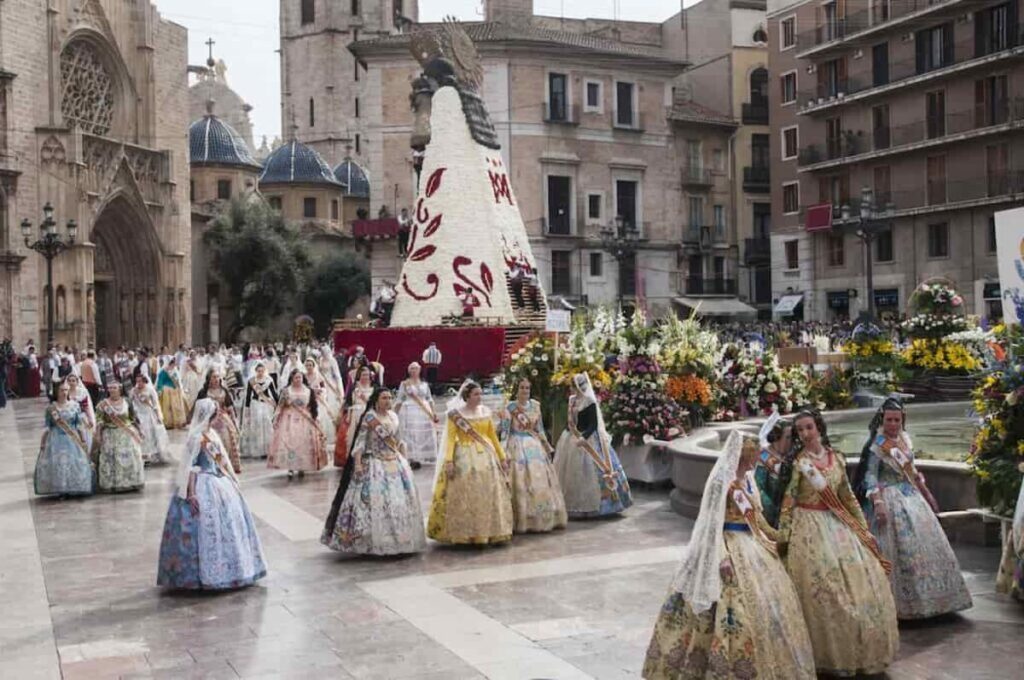
10. Valencia hosts the world-famous La Tomatina festival
So, you’ve probably heard about this wild, tomato-throwing festival called La Tomatina. It’s one of those things that makes you go, “Really? Does that actually happen?”
Yep, it sure does, and it’s world-famous. Now, just to set the record straight, La Tomatina takes place in Buñol, a town not too far from Valencia.
Every year, thousands of people from all over the globe flock there to take part in what could be the world’s biggest food fight. Imagine a sea of red as tons of tomatoes are hurled, squished, and splattered.
It’s messy, it’s hilarious, and it’s a bucket list kind of adventure. And while it’s not right in Valencia, it’s close enough that the city buzzes with excitement every time it rolls around.
11. The biggest park in Spain is in Valencia
Alright, moving on from flying tomatoes to something a bit more tranquil. Did you know that Valencia is home to the biggest park in Spain?
It’s called the Turia Gardens, and it stretches right through the city, following the old riverbed of the Turia River. This isn’t just a patch of grass with a couple of benches – it’s a massive green space filled with sports areas, bike paths, playgrounds, and even a few cafes.
Whether you’re up for a morning jog, an afternoon stroll, or just a lazy day under the sun, the Turia Gardens offer a perfect escape from the hustle and bustle. It’s like the city’s green lung, providing a breath of fresh air for everyone.

12. The Turia park was once a river
Now, here’s a bit of history that’s pretty cool – the Turia Gardens were actually once a river. Yep, the Turia River used to flow right through Valencia, but after a devastating flood in 1957, the city rerouted the river to the south to prevent future tragedies.
The old riverbed was then transformed into the park we know and love today. It’s a fascinating example of how a city can turn a challenge into an opportunity, creating something beautiful and beneficial out of a difficult situation.
Walking through the park, it’s hard to imagine it filled with water instead of joggers and picnickers, but it adds an extra layer of meaning to this urban oasis.
13. Valencia’s Valentine’s Day is actually on October 9th
Here’s a little-known fact that might surprise you – in Valencia, we have our own version of Valentine’s Day, and it’s not on February 14th. Instead, we celebrate love and affection on October 9th, which is also the Day of the Valencian Community.
It’s a day full of festivities, including parades, fireworks, and, of course, plenty of opportunities to show some love. While it might not have the same commercial hype as the February holiday, it’s a special day for locals, filled with tradition and a strong sense of community.
So, if you’re in town during this time, don’t be surprised to see a bit more affection in the air than usual.
14. Valencia is the home of horchata
If you’ve never tried horchata, you’re missing out, and there’s no better place to try this refreshing drink than in its hometown of Valencia. Not to be confused with the rice-based horchata you might find in Latin America, Valencian horchata is made from tiger nuts, water, and sugar.
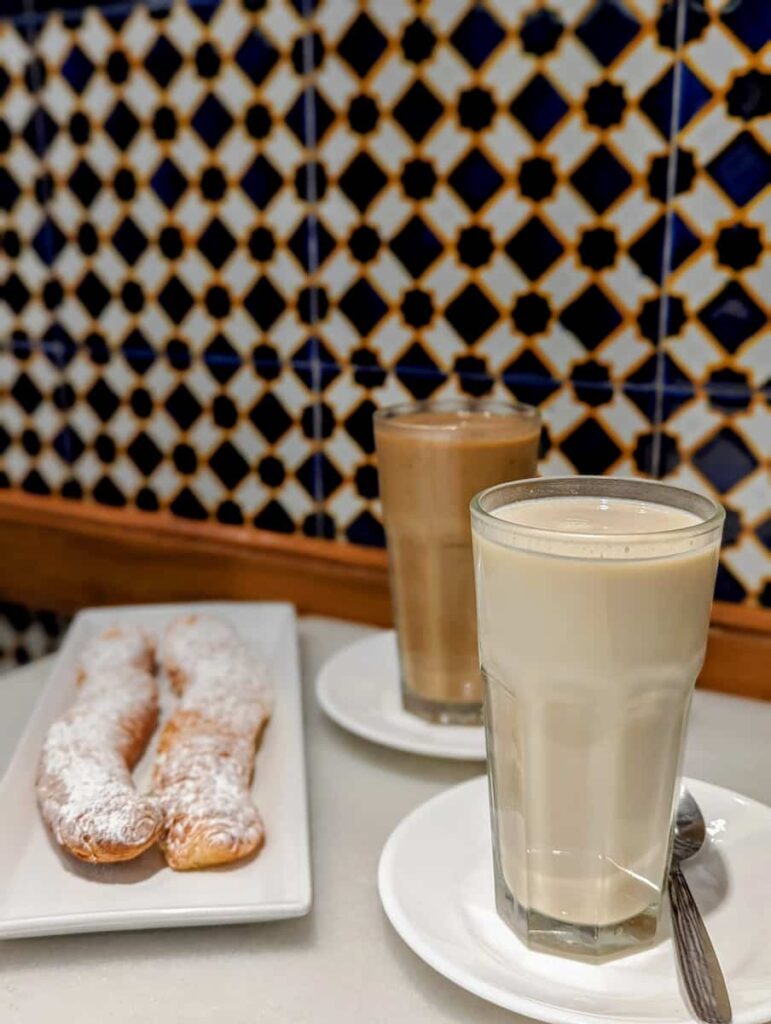
It’s a cool, sweet treat that’s especially popular in the summer months. You’ll find horchaterías scattered throughout the city, each claiming to have the best horchata in town.
It’s a staple of Valencian cuisine and a must-try for any visitor. Whether you grab a glass to go or sit down in a café to enjoy it with a traditional farton, it’s a tasty way to beat the heat.
15. Agua de Valencia is a famous cocktail from the city
Despite its name suggesting something a bit more, well, watery, Agua de Valencia is actually a potent cocktail that’s become famous far beyond the city’s borders. Made with a mix of cava or champagne, orange juice, vodka, and gin, it’s a refreshing yet strong drink that’s perfect for those warm Valencian nights.
Originating from a bar in Valencia in the 1950s, it’s now a staple of the local nightlife. If you’re out exploring the city’s bars and restaurants, ordering an Agua de Valencia is a must.
Just be warned – it’s smoother than it is strong, so enjoy it responsibly!
16. Valencia was a major stop along the Silk Route in the Middle Ages
Did you know that back in the Middle Ages, Valencia was a major player on the Silk Route? Yeah, this city wasn’t just a nice spot on the coast – it was a bustling hub for silk trade, connecting Europe with the far reaches of Asia.
The Silk Exchange, or La Lonja de la Seda, is a testament to that era, and it’s a UNESCO World Heritage site today. Walking through its Gothic halls, you can almost hear the chatter of merchants and the rustle of silk.
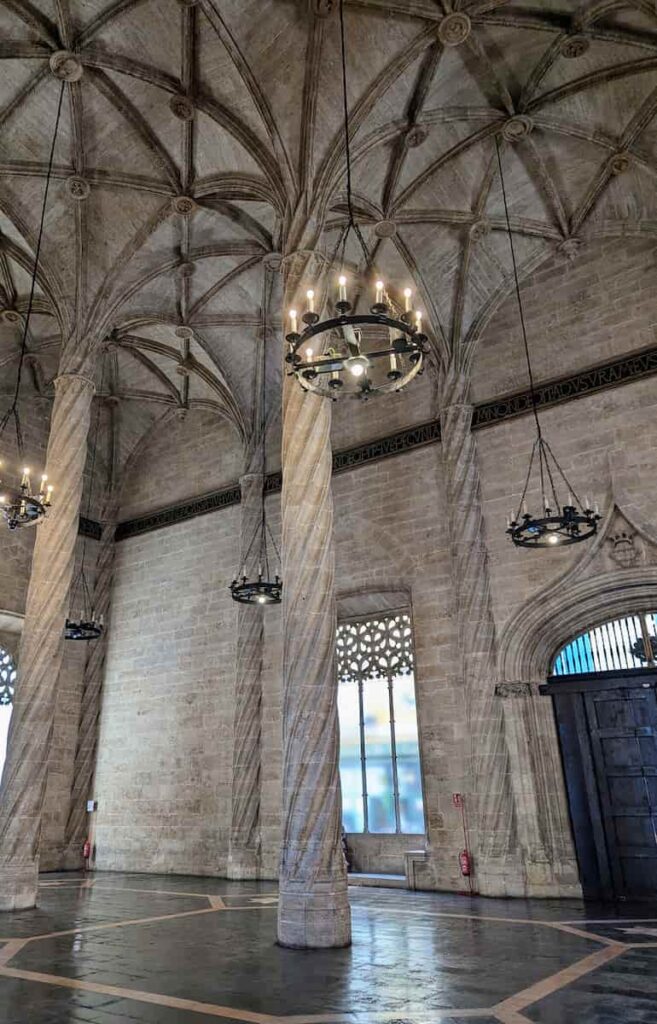
It’s a fascinating glimpse into the past and a reminder of Valencia’s long-standing importance in global trade. If you’re into history or just love the idea of stepping back in time, this place is a must-visit.
17. The rice grown near Valencia continues to be irrigated using a system set up by the Moors 1,200 years ago
Here’s a fact that’s as cool as it is ancient: the rice fields near Valencia are still being watered using an irrigation system that the Moors set up around 1,200 years ago. Considering Valencia is the land of paella, you can bet this rice is pretty important.
The system they designed was so ahead of its time that it’s still in use, ensuring the rice fields get just the right amount of water. This bit of agricultural genius not only shows the lasting impact of historical cultures on the region but also ties directly to the food on your plate today.
When you’re munching on that authentic paella Valenciana, remember you’re tasting the result of centuries-old innovation.

18. Valencia has two official languages: Spanish and Valencian
Let’s talk language. In Valencia, we’ve got two official languages: Spanish and Valencian.
Valencian is fairly similar to Catalan and is spoken by millions of people in the region. While you’ll get by just fine with Spanish, hearing and maybe even trying out a few phrases in Valencian is part of the local experience.
It’s a sign of the region’s unique identity and culture. And don’t worry if you’re not fluent – just showing an interest in Valencian can be a great way to connect with locals.
Plus, it’s always fun to learn a few words in a new language, especially when it’s one with deep roots in the area you’re visiting.
19. Valencia was founded in 138 BC by the Romans
Let’s take a quick trip way back in time. Did you know Valencia was founded by the Romans in 138 BC? That’s right, this city has been around the block a few times.
Originally, it was a small Roman colony called Valentia Edetanorum, which shows you just how deep the roots go here. Walking through the historic parts of Valencia, you’ll stumble upon ancient ruins and artifacts that remind you of its long, storied past.
It’s like the city is a living museum, where every corner tells a tale of conquests, cultures, and civilizations that have made their mark over thousands of years. It’s pretty amazing to think about all the history that’s happened right where you’re standing.
20. The name “Valencia” means “valor” or “bravery”
Now, about the name Valencia – ever wonder what it means? It’s believed to come from the Latin word for “valor” or “bravery.”
Given the city’s history of being founded by Romans, passing through the hands of Visigoths, Moors, and eventually becoming a key part of the Spanish Kingdom, you can bet there’s been no shortage of bravery here.
The name itself feels like a nod to the city’s enduring spirit and its ability to evolve and flourish through the centuries. At the same time, it’s a cool reminder that places aren’t just spots on a map – they carry the legacy and the stories of those who’ve lived there before us.

21. Valencia was Islamic for more than 500 years
Here’s a fact that might surprise you: Valencia was under Islamic rule for over 500 years. From the early 8th century until the late 13th century, this part of Spain was a thriving part of the Islamic world.
This period left a lasting impact on the city, from the architecture and art to the irrigation techniques used in agriculture that we still see today. The influence is woven into the fabric of Valencia, blending seamlessly with the Christian and Jewish influences that followed.
It’s this rich tapestry of cultures and history that gives Valencia its unique character. Plus, it’s a reminder of how diverse influences can come together to create something truly special.
22. Valencia was the capital of Spain for almost a year
Here’s a tidbit that might surprise you – Valencia was once the capital of Spain! For almost a year, from 1936 to 1937 during the Spanish Civil War, this city took center stage as the country’s capital.
It was a tumultuous time, but Valencia played a crucial role in the history of Spain. Walking through the streets today, you can find plaques and landmarks that nod to this period.
This time was a tragic but fascinating layer of the city’s rich history, showing its resilience and importance beyond just being a beautiful place to visit. So, next time you’re wandering around, remember you’re treading paths that once were at the heart of Spain’s governance.

23. The first printed book in Spain was printed in Valencia
Now, let’s talk about a milestone in the world of books – the first printed book in Spain was produced right here in Valencia. It happened in the 15th century, making the city a pioneer in bringing the written word to the masses.
This was a big deal, considering that before this, books were handwritten and not easily accessible to ordinary people. The printing press represented a leap forward in knowledge sharing and education.
When you’re in Valencia, you can explore places that celebrate this rich literary history and even see some of the earliest printed works. It’s a nod to the city’s long-standing relationship with arts and innovation.
24. Valencia has been ranked as the healthiest city in the world
Did you know that Valencia has been ranked as the healthiest city in the world? That’s right – with its sunny climate, fresh Mediterranean diet, and loads of green spaces, it’s a place where living well just comes naturally.
Whether it’s the easy access to fresh fruits and veggies, the countless opportunities to be active outdoors, or the laid-back lifestyle that reduces stress, Valencia has got it all. Plus, with its focus on walkability and cycling, getting around is a breeze and great for your health.
It’s not just about living longer, as well – it’s about living better. And let’s be honest, sipping on horchata in the sunshine doesn’t hurt either.
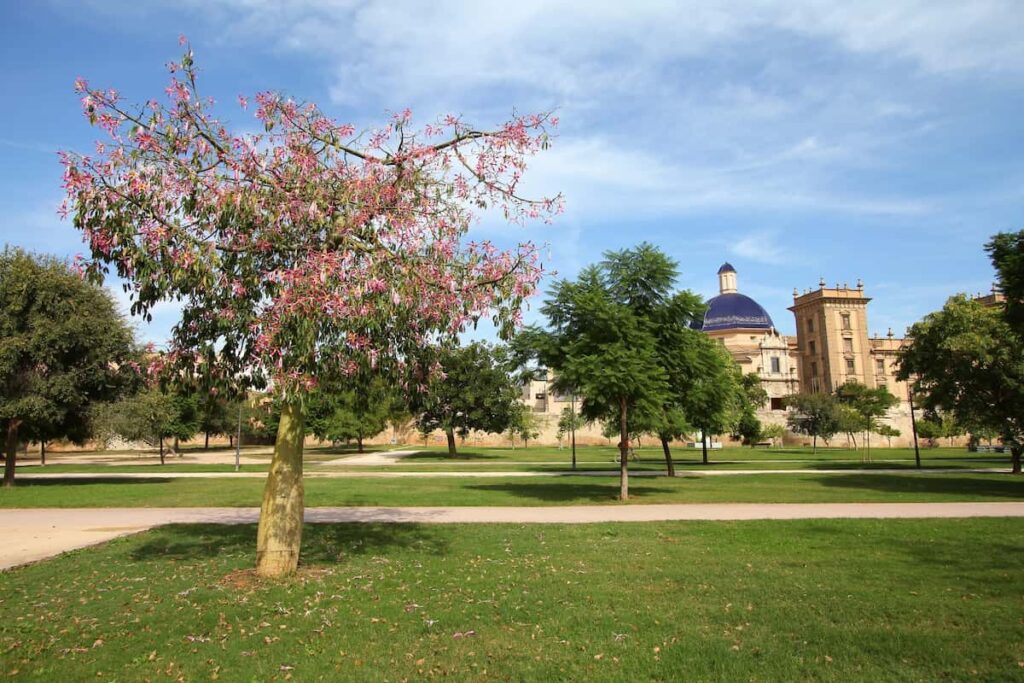
25. Valencia is the European Green Capital
Did you hear that Valencia has been named the European Green Capital? That’s right, and it’s not hard to see why.
This city is seriously committed to sustainability and making urban life greener. From the lush Turia Gardens that stretch across the city to the eco-friendly approach to transportation, Valencia is leading the way in environmental stewardship.
It’s a place where biking is more than just a leisure activity – it’s a way of life. Plus, the focus on renewable energy and waste reduction shows that the city isn’t just about looking good; it’s about doing good for the planet.
Living here, you get a real sense of pride in how the city balances modern living with nature.
26. Almost 15% of the Valencian population is foreign
Valencia is more than just a spot on the map – it’s a melting pot of cultures. With almost 15% of its population coming from abroad, the city boasts an incredible diversity that’s reflected in its neighborhoods, festivals, and food.
Walking through the streets, you can hear a multitude of languages spoken and see the influence of different cultures everywhere. From sushi spots to Italian gelaterias and traditional Spanish tapas bars, the variety is endless.
This diversity adds a vibrant layer to the city’s character, making it a place where everyone can find a little piece of home while being miles away. It’s this mix of people and cultures that really brings Valencia to life.

27. Valencia’s heraldic symbol is a bat, allegedly dating from the 1200s
Let’s talk about something that might catch you off guard – Valencia’s heraldic symbol is a bat. Yes, you read that right, a bat.
This isn’t something out of a gothic novel, though. The bat symbol dates back to the 1200s and is steeped in legend and history. Some say it represents good fortune, while others believe it was chosen because a bat once woke up a sleeping soldier in time to alert him of an approaching enemy.
Today, you’ll see the bat on the city’s coat of arms, fluttering on flags, and even incorporated into the logos of local sports teams. It’s a unique emblem that adds a touch of mystery and history to this sunny Mediterranean city.
28. Famous Spanish painter, Joaquín Sorolla, is from Valencia
Time to shine a spotlight on one of Valencia’s very own – Joaquín Sorolla, a painter who really knew how to capture the essence of Spanish life and landscapes like no other. Born right here in Valencia, Sorolla’s work is celebrated for its vibrant use of light and color, truly bringing scenes of everyday life, the sea, and gardens to life.
His paintings feel like a warm, sunny day by the Mediterranean. If you’re into art, visiting the Sorolla Museum in Madrid is great, but remember, it all started here in Valencia. His legacy is a point of pride for locals, adding a rich layer to our cultural tapestry.
29. Many famous Spanish artworks were protected in one of Valencia’s medieval gates to the city during the Spanish Civil War
Here’s a piece of history that’s both fascinating and a little bit thrilling – during the Spanish Civil War, Valencia played a crucial role in protecting Spain’s artistic heritage. Some of the country’s most famous artworks were hidden away in the Torres de Serranos, one of the city’s grand medieval gates.
This wasn’t just any old storage spot – it was a deliberate effort to safeguard the country’s cultural treasures from the ravages of war. This means that when you’re walking through those historic gates, you’ll also be able to recognize the city’s resilience and its deep connection to Spanish culture and history.
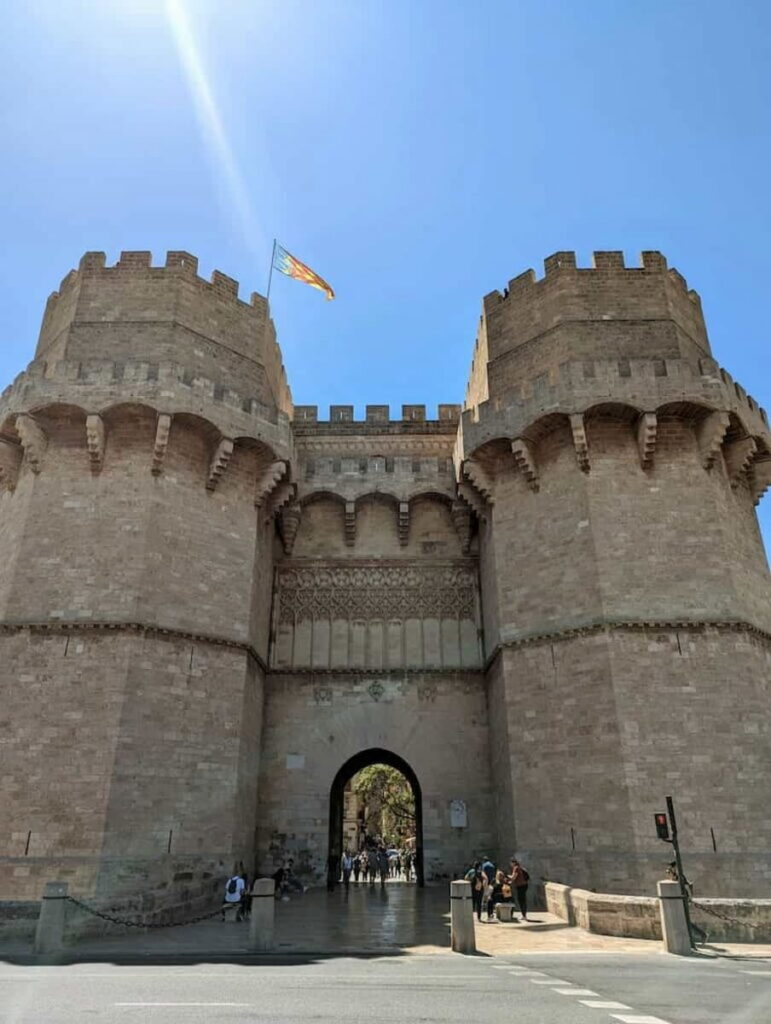
30. Valencia has been named the best place for expats in the world several years in a row
Now, for something that’s pretty cool and speaks volumes about life in Valencia – it was named the best place for expats in the world several years running. People from all corners of the globe have fallen in love with Valencia’s laid-back lifestyle, affordable living costs, and sunny weather.
But it’s not just the practical stuff – it’s the welcoming community, vibrant culture, and the ease of slipping into a life that feels both exciting and comfortably familiar. Whether you’re looking to move abroad or just dreaming of a change, Valencia tops the list for a reason.
31. Valencia was the home of the world’s most expensive bridge
The Puente de las Flores is a beautiful bridge in Valencia, adorned with around 27,000 flowers, is a vibrant splash of color in the city. However, beauty comes at a price – in less than a decade, maintenance costs soared to more than EUR 4.5 million, making it for a time the most expensive bridge in the world!
While locals and visitors alike marvel at its floral spectacle, the spending on this botanical bridge eventually had to be trimmed back. Despite the cutbacks, the Puente de las Flores remains a testament to Valencia’s commitment to beauty and nature in urban spaces.
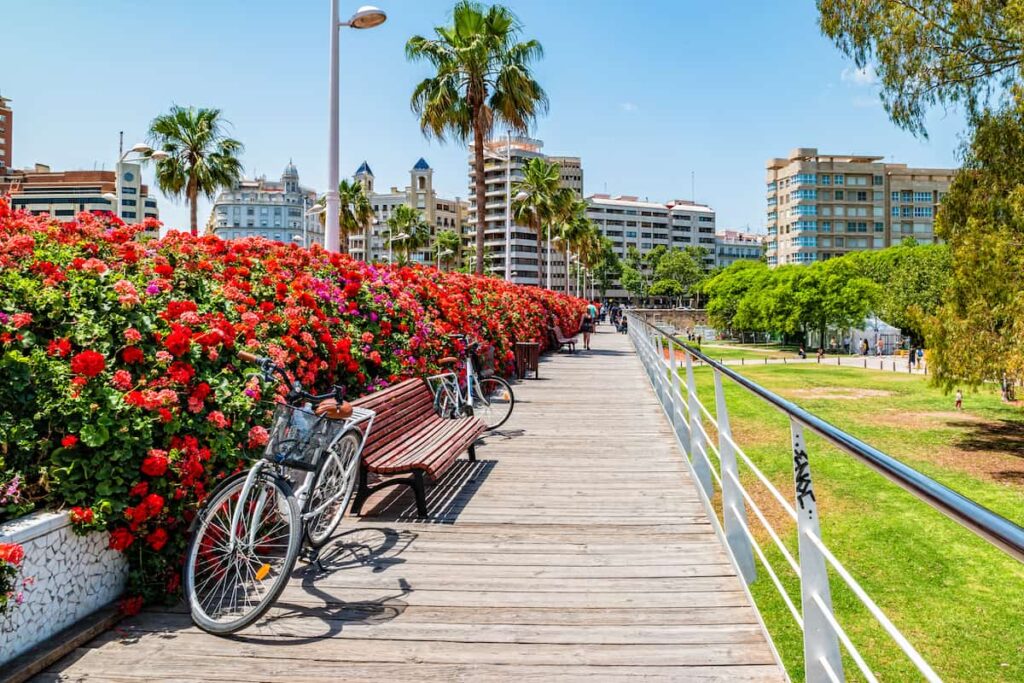
32. The world’s second narrowest building is in Valencia
Now for a quirky bit of trivia – Valencia is home to the world’s second narrowest building. Tucked away in the city center, this slender structure might make you do a double-take.
It’s only wide enough for a single window across each of its floors! Despite its size, this building is a beloved oddity among Valencians and tourists alike.
Finding it feels like uncovering a secret, a testament to the city’s charm and its capacity for surprises around every corner. If you enjoy seeking out the unusual and the unique, this is a must-see.
33. The world’s first psychiatric hospital was established in Valencia
Here’s a piece of history that’s both profound and pioneering – Valencia was the site of the world’s first psychiatric hospital. Established in the early 15th century, this groundbreaking institution marked a shift towards more compassionate care for individuals with mental health issues.
At a time when the rest of the world was far less understanding, Valencia took a step forward in recognizing the need for specialized care and treatment. Today, it stands as a reminder of the city’s long history of progressiveness and empathy.
While the original building no longer serves its initial purpose, its legacy continues to impact how we view and treat mental health. It’s a significant part of Valencia’s heritage that underscores the city’s place in the broader narrative of human compassion and medical advancement.
34. The world’s oldest Three Kings parade took place in Valencia
Here’s something that’ll add a sparkle to your holiday spirit – Valencia is believed to host the oldest Three Kings parade in the world, with the first one taking place way back in 1885. And guess what? It’s still a highlight every year on January 5th.
This isn’t just any parade – it’s steeped in tradition, history, and a whole lot of magic. Picture this: elaborate floats, vibrant costumes, and the Three Kings themselves, making their way through the city, all under the glow of thousands of lights.
It’s a spectacle that captures the imagination of everyone, young and old. The sense of community and joy is palpable, as people gather to celebrate and welcome the kings. Being part of this historic event feels like stepping into a living piece of history, one that continues to enchant and bring together the people of Valencia.
35. Valencia oranges are world famous
Let’s talk about something sweet and juicy – Valencia oranges. These aren’t just any oranges – they’re world-renowned for their quality and taste.
Whether you’re sipping on some freshly squeezed juice or enjoying a dessert infused with their zest, Valencia oranges are a treat.
What’s really cool is that these oranges aren’t just for eating. They also play a big role in the local economy and culture.
Driving through the countryside, you’ll see orchards filled with these golden gems basking in the sun. It’s a sight that’s as beautiful as it is delicious.
36. Valencia used to host the European Grand Prix
For the speed demons and car enthusiasts out there, here’s a fun fact: Valencia once played host to the European Grand Prix. From 2008 to 2012, the city’s streets transformed into a high-speed racetrack, drawing fans from all over the globe.

The Valencia Street Circuit was known for its challenging turns and stunning backdrop, offering a unique blend of urban and seaside views. Though the roar of Formula 1 cars is no longer a regular part of Valencia’s summer, the legacy of those races still lingers in the air.
It was a time when the city was at the center of the racing world, showcasing its versatility and capacity for hosting major international events. Even if you’re not a racing fan, it’s a cool piece of Valencia’s recent history that added a bit of extra thrill to the city’s atmosphere.
37. Valencia is the third-largest city in Spain
Let’s zoom out a bit and look at Valencia in the grand scheme of things. It’s the third-largest city in Spain, trailing only behind Madrid and Barcelona.
But don’t let its ranking fool you – Valencia packs a punch with its unique blend of history, culture, and modernity. From the futuristic City of Arts and Sciences to the bustling streets of its ancient city center, there’s a diverse range of experiences waiting for you here.
It’s a place where you can stroll through centuries-old buildings in the morning and marvel at avant-garde architecture in the afternoon. Living in such a vibrant city, there’s always something happening, a new corner to discover, and an endless supply of orange-scented air.
38. The Port of Valencia is responsible for half of Spain’s GDP
Here’s a fact that might surprise you: the Port of Valencia is a massive deal, responsible for handling about half of Spain’s GDP in terms of goods movement. That’s right, half!
The reason for this is that it’s the Mediterranean’s busiest cargo port, as well as being the fifth busiest port in Europe and the 30th globally. This has meant that half of Spain’s working population is actually connected in some way to Valencia’s port – whether directly or otherwise.
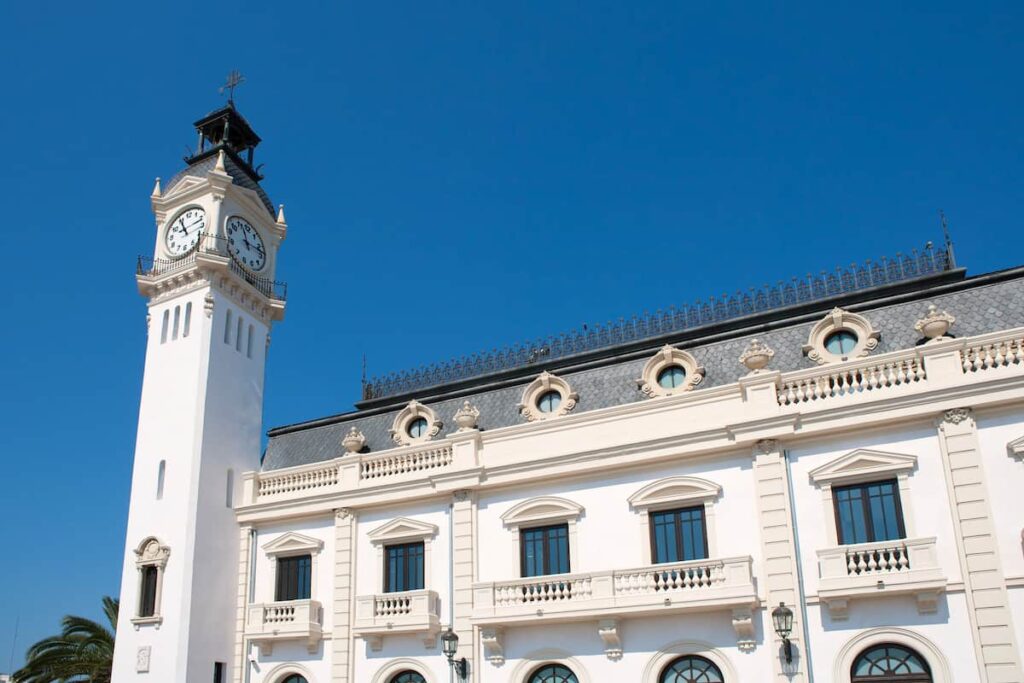
39. There are 58 places called Valencia in the world
Valencia might be unique to us, but did you know there are 58 places with the same name around the globe? From the United States to Venezuela, the name Valencia has traveled far and wide, marking cities, towns, and even neighborhoods.
It’s a little fun fact that makes you realize the influence of Spanish culture and history across the world. Each Valencia has its own story, but there’s something special about knowing we’re part of a larger community, sharing a name that resonates in so many different places.
40. Don’t confuse it with the city of Palencia, also in Spain
Okay, here’s a funny story – there’s a city in Spain called Palencia, and it’s not uncommon for people, even Spaniards, to get it mixed up with Valencia. The P and V sounds are pretty similar in Spanish, which can lead to some confusion.
I remember being on a train once when the announcer said, “next stop Palencia,” and I, along with a bunch of native speakers around me, all had a “wait, what” moment.
Despite the phonetic similarity, these two cities are quite far from each other, each with its own charm and character. So, if you ever find yourself heading to one and ending up in the other, know you’re not the first, and surely won’t be the last, to mix them up. But hey, it’s all part of the adventure, right?
